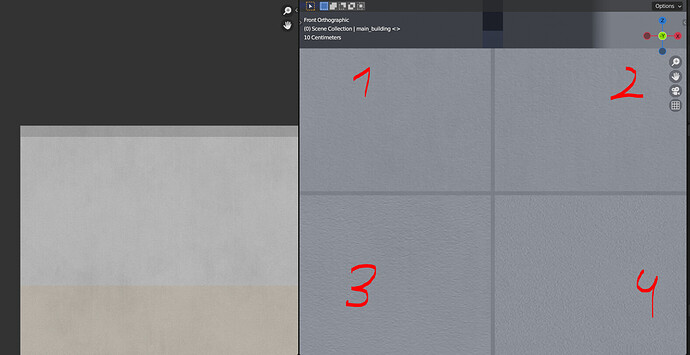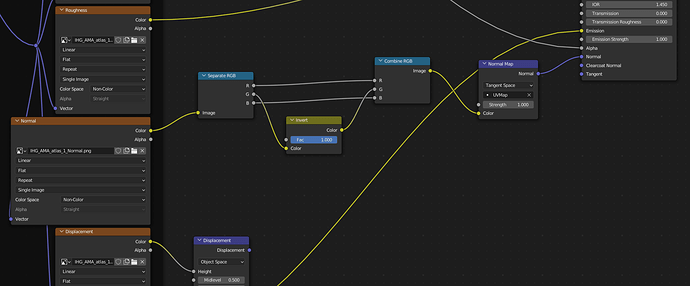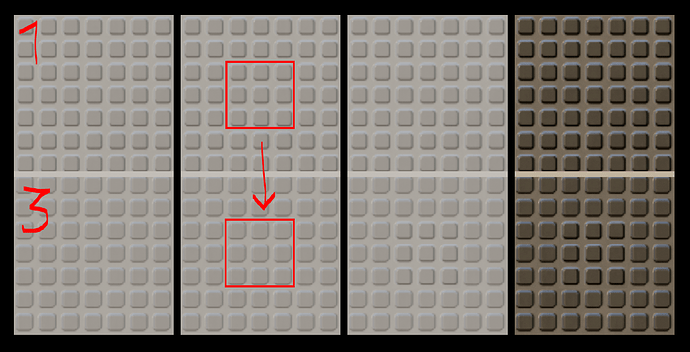Hello. Such a problem - depending on the rotation of the UV shell, polygons have different shading of bumps.
I found one post on this forum, but I did not understand how the TS solved his problem by finding out what it was connected with.
I have never changed the Normal Map colors and just use the map that Substance Painter exports.
Screenshots with an example:
Normal maps work in tangent space, so the orientation of your UV islands matters.
See this Polycount thread for a more detailed discussion.
And also: we don’t see any normal map here… This shadow could be from anything…
Why should you change the color ?? Better show the shader setup because something is amiss here. And this wierd -=- blue and cyan thing is what… (also different in 1 and 2)… ??
Looks like Grid texture stretched horizontally and scaled up
Tbh, I can’t see where exactly the mentioned shading problem is…
Generally a normal map is produced in a specific space and cant be used with another space setting. The colors encoded in would be very different.
I had a short look at the other thread and its problem was, that the color management changed the color value for a neutral upfacing normal so his normal vector wasnt at unit length.
Your problem most likely it comes from not having setup your normal texture correctly. You have to set the textures colorspace to “NonColor” otherwise the colors are processed and its resulting colors no longer represent vectors at unit length, what leads to wrong results and with it different shades.
I always set Non-Color for the Normal Map, I also experimented with nodes, but I could not achieve a decent result. Here are my nodes that I use:
I think I understood what you mean (probably), as an experiment I decided to use the simplest tile, which, in theory, should shade the same from all sides. I also aligned the tile lines on different islands with respect to each other, for clarity. I did not change the rotations of the UV-shells.
Even in this case, you can see that there is a difference in the shadows on polygons that are in the same plane. This difference is subtle, depending on the rotation of the light source.
Here I overlay 9 cells from UV-shell 1 onto UV-shell 3. The difference is barely noticeable, but it is there.
Hmm. ok.
Its a bit hard to follow what you mean, but I guess you kept the default point light source for this test? And shadings are from different parts of the mesh? Then thats expected. A point light has a position, so the light direction is different for these patches.
Check if you have normal autosmoothing on or custom split normals and if changing that helps in your org case.





